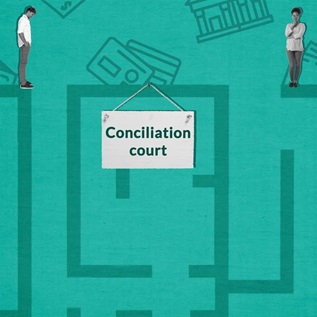''Taking a Hard Look at Student Debt''
You can afford to go to college.
If you're admitted to Penn, you can graduate without the burden of unmanageable student loan debt. By promising to replace loans with grants, which do not need to be repaid, for students from families with incomes below $50,000, Penn is taking the lead with other elite universities to address growing concern about student debt and ensure their doors are open to all qualified students.
While we celebrate Penn's announcement, we must recognize that very few public universities or community colleges - schools that educate most of our nation's students - can afford to do the same. More and more students and families take out loans, and student debt burden is an increasing problem.
Nationwide, two-thirds of all students now graduate with student loan debt, compared with less than half in the early 1990s.
The average debt has risen by more than 50 percent in the last decade, even after inflation. In our own back yard, more than 70 percent of graduates from Drexel, La Salle, Lincoln, Penn State-University Park, Philadelphia University, Temple and Widener now leave school with debt exceeding the national average.
Moreover, these sobering numbers still do not tell the story of lost opportunity for students or society. They don't describe the young people who forgo college or drop out to avoid going into debt. Or those who can't afford to take vitally important jobs as teachers, social workers, nurses and journalists because their loan debts are too large.
The numbers don't tell of home purchases deferred or retirement funds that don't get started or shrink when they should be growing in order to pay off student loans. A college education should strengthen family security, not put the financial future of so many individuals and families at risk.
To be sure, higher education is crucial to our nation's economic competitiveness. A college graduate will, on average, earn $1 million more over a lifetime than a high school graduate. Better-educated young people contribute more to the tax base and are more likely to vote and to volunteer.
America desperately needs well-educated citizens to teach the next generation, serve in our police forces, start new businesses and care for the sick. But while college can give students more tools and options for work and life, it shouldn't cost families their economic security.
At The Pew Charitable Trusts, we have been working to identify affordable, common-sense solutions.
One option is to limit student debt payments to no more than 10 percent of a person's annual income so that young people who take important but lower-paying jobs don't face unmanageable payment expectations.
Another is to improve provisions to ensure that young people facing economic hardship, such as that caused by a lost job or major medical crisis, won't find their credit ratings destroyed if they can't make their payments.
Families today face extraordinary financial challenges on many fronts - health care, housing, retirement and college education. And, ironically, it is precisely the strong earning potential from a college degree that can make those challenges manageable.
It's time to help. Penn is taking a leadership role in recruiting talented, low-income students and ensuring that they can start their lives without crushing student loan debt.
But, as a nation, we still have a long way to go to make that possibility available to all students.
Rebecca W. Rimel is President and CEO of The Pew Charitable Trusts, which funds the Project on Student Debt.











